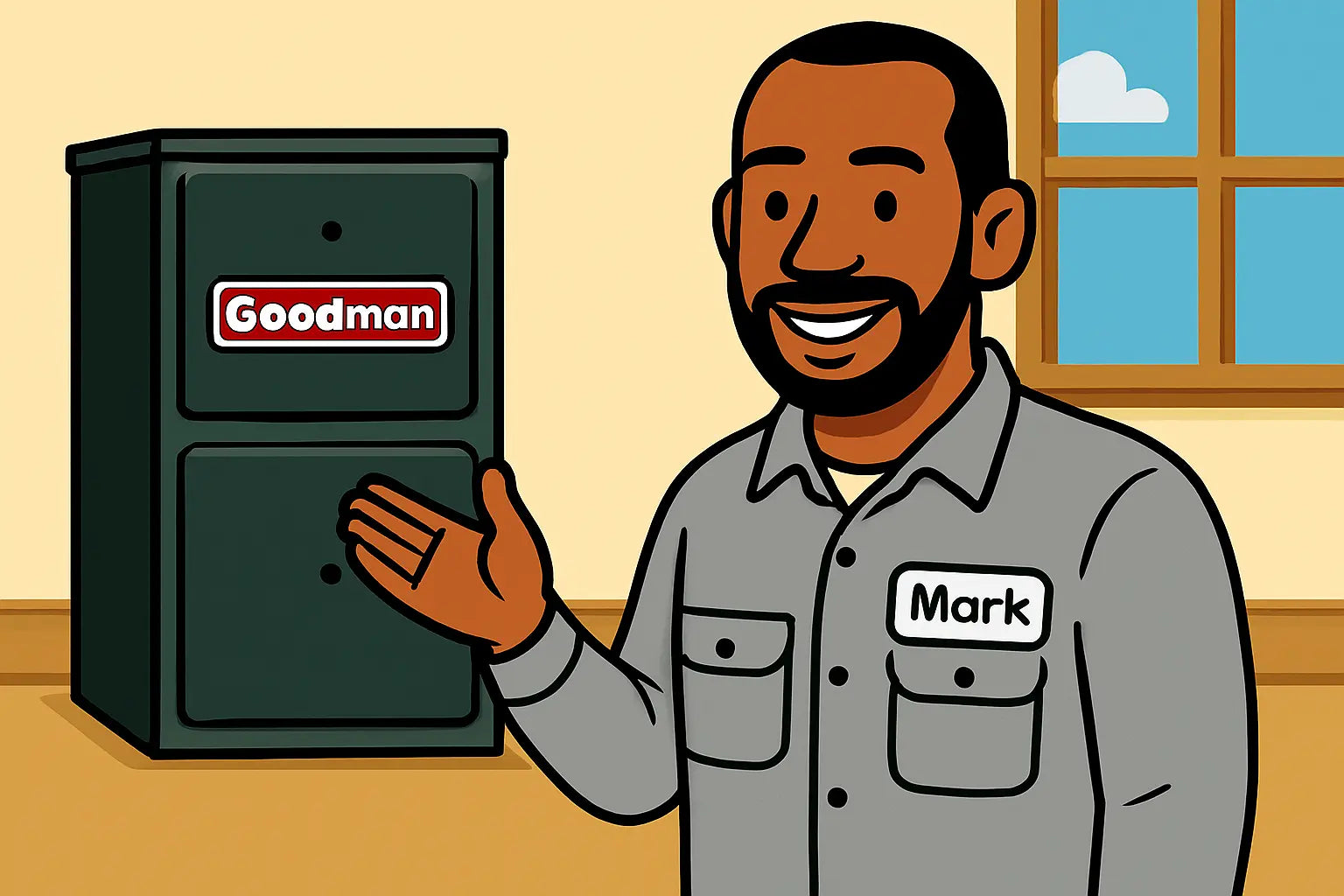Hey Friends! Mark Here!
The Goodman GR9S920603BN is a versatile, high-performance 92% AFUE single-stage gas furnace that supports both upflow and horizontal installation configurations. This adaptability is one of the reasons it’s so popular with homeowners and installers alike. But the big question is: which installation option is right for your home?
In this blog, we’ll explore the differences between upflow and horizontal setups, what they mean for airflow and efficiency, and how to decide which configuration will deliver the best results for your comfort and budget.
What is Upflow Installation?
An upflow installation means the furnace pulls in return air from the bottom and pushes heated air upward through the ductwork. This is the most common installation type for homes with basements or dedicated furnace rooms.
Advantages of Upflow Setup:
-
Ideal for basements or dedicated furnace spaces
-
Supports efficient airflow through vertical duct systems
-
Generally easier to maintain and service
-
Works well in colder climates where basements are common
According to Energy.gov, a properly installed furnace in the right configuration can significantly improve heating efficiency and reduce long-term energy bills.
What is Horizontal Installation?
A horizontal installation means the furnace is positioned on its side, pulling return air from one end and pushing supply air out the other. This layout is common in homes without basements, such as ranch-style houses, or in tight crawl spaces and attics.
Advantages of Horizontal Setup:
-
Space-saving for attics, crawl spaces, or garages
-
Allows installation in compact or low-clearance areas
-
Supports homes with horizontal duct layouts
-
Perfect for regions with no basements or limited space
As noted by the Air Conditioning Contractors of America (ACCA), proper ductwork design and installation are critical for horizontal setups to prevent airflow restrictions that can reduce system efficiency.
Factors to Consider When Choosing Your Setup
1. Home Layout
-
Basement homes → Upflow installation is usually better
-
Ranch or crawlspace homes → Horizontal installation may be required
2. Ductwork Design
The configuration of your ducts plays a major role. A poorly matched duct system can reduce airflow and efficiency by as much as 30%, according to ENERGY STAR.
3. Climate and Regional Norms
Colder climates often favor basements and upflow designs, while warmer regions lean toward horizontal configurations in attics or garages.
4. Maintenance and Accessibility
Upflow installations typically allow easier service access, which can save you money on routine maintenance over time. Horizontal systems may be harder to reach in crawl spaces or attics.
Optimizing Airflow in Either Configuration
Whether you choose upflow or horizontal, the GR9S920603BN features a 9-speed blower motor that helps fine-tune airflow for better comfort and energy savings. To maximize efficiency:
-
Ensure ducts are properly sealed and insulated (U.S. Department of Energy).
-
Schedule annual maintenance to keep airflow balanced.
-
Change filters every 1–3 months to avoid unnecessary strain.
Final Thoughts
Deciding between upflow and horizontal installation for your GR9S920603BN furnace comes down to your home’s layout, available space, and long-term comfort goals. Upflow installations are ideal when you have a basement or utility room with vertical clearance, offering better airflow distribution in multi-level homes. Horizontal configurations, on the other hand, shine in tight spaces like attics, crawl spaces, or utility closets where flexibility is key.
Whichever setup you choose, proper installation plays a critical role in maximizing efficiency, ensuring reliable heating, and extending the life of your furnace. That’s why many homeowners turn to trusted solutions like the Goodman 92% AFUE 60,000 BTU Furnace (Model GR9S920603BN), which is designed for both upflow and horizontal applications. This versatility gives you confidence that your system will deliver consistent comfort while fitting seamlessly into your home.
Think you might need a professional to look at your unit? Visit: Don’t Ignore These Red Flags.
In the end, pairing the right furnace with the correct installation approach ensures that you’ll enjoy dependable, energy-efficient heating season after season.
- Mark, your go-to HVAC tech!







